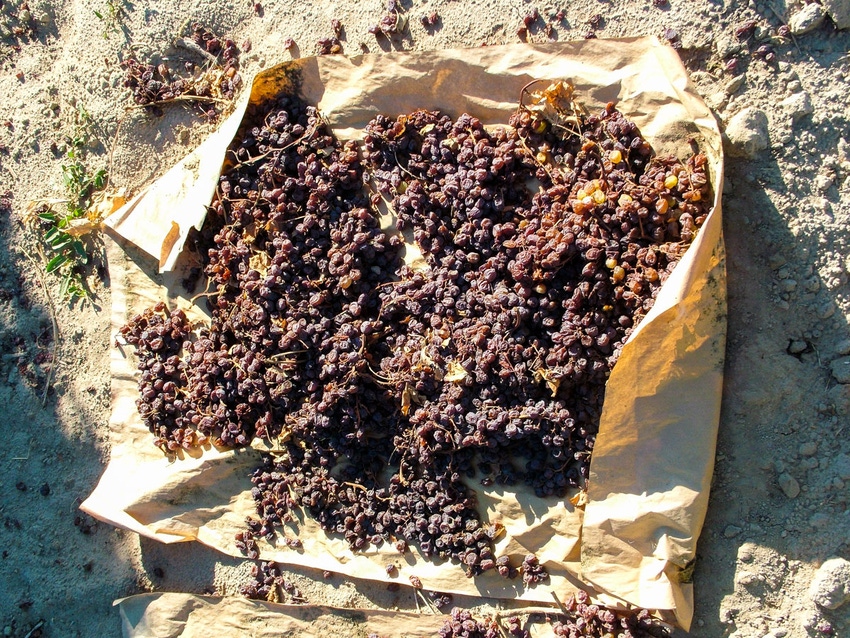
Except for a few dried-on-the-vine (DOV) blocks here and there, California’s 2016 raisin grape harvest finished up by Oct. 15.
It began in mid-August when growers began cutting the canes of the early-ripening variety, Selma Pete, to accelerate drying on the vine for mechanical harvesting.
“This year’s harvest was about a week earlier than usual due to the favorable weather this year, and we had a very good drying season without any rain issues,” says Victor Sahatdjian. The president of Victor Packing Company, Madera, Calif., his family has been growing grapes in the San Joaquin Valley since 1928.
“Production this year was down about 15 percent from last year’s strong crop, and the vines were under high pressure from powdery mildew,” he adds. “But, for growers who kept that disease under control, the quality of the raisins this season is excellent.”
Thompson Seedless accounts for the bulk of California’s raisin-type grapes which, in addition to Selma Pete, also include two other earlier-maturing varieties, Dovine and Fiesta. The heart of the industry lies within about a 50-mile radius of Fresno.
As the harvest wound down, the industry hadn’t yet agreed on the price for this year’s raisins.
However, the current large world supply of raisins and the amount of the California 2015 crop still unsold by Aug. 1, the start of the 2016 crop marketing year, is weighing on the minds of both growers and processors.
So are other international concerns, Sahatdjian notes. They include tough competition from other raisin-producing countries, the strong U.S. dollar and uncertainties about how Brexit might affect the world raisin market.
California’s raisin production in 2015 totaled 336,698 tons. Nearly half of that, 158,287 tons, was carried over to the current marketing year
“That’s about a six- to seven-month supply added to this year’s production,” Sahatdjian says. “The only way to handle this over-supply is to sell our way out of it.”
Typically, such a situation tends to push prices down.
“No one comes out of this situation a winner until supply and demand get back in balance,” Sahatdjian says. ”Processors need growers to have product to sell, and growers need processors to pack and ship their crop to buyers. Right now, it’s painful on both sides.”
Meanwhile, as they have in recent years, growers continue to pull out their raisin-type grape vineyards at the rate of about 6,000 to 8.000 acres a year, leaving about 175,000 acres of vineyards currently in production. More profitable cropping alternatives, including tree nuts – such as almonds, pistachios and walnuts – and some types of citrus are helping to drive this trend.
“The industry has a history of going through cycles of correcting imbalanced supply and demand,” Sahatdjian says, “It’s possible that the on-going reduction in raisin vineyard acreage could see the pendulum swing the other way and, eventually, result in a shortage of raisins.”
About the Author(s)
You May Also Like




